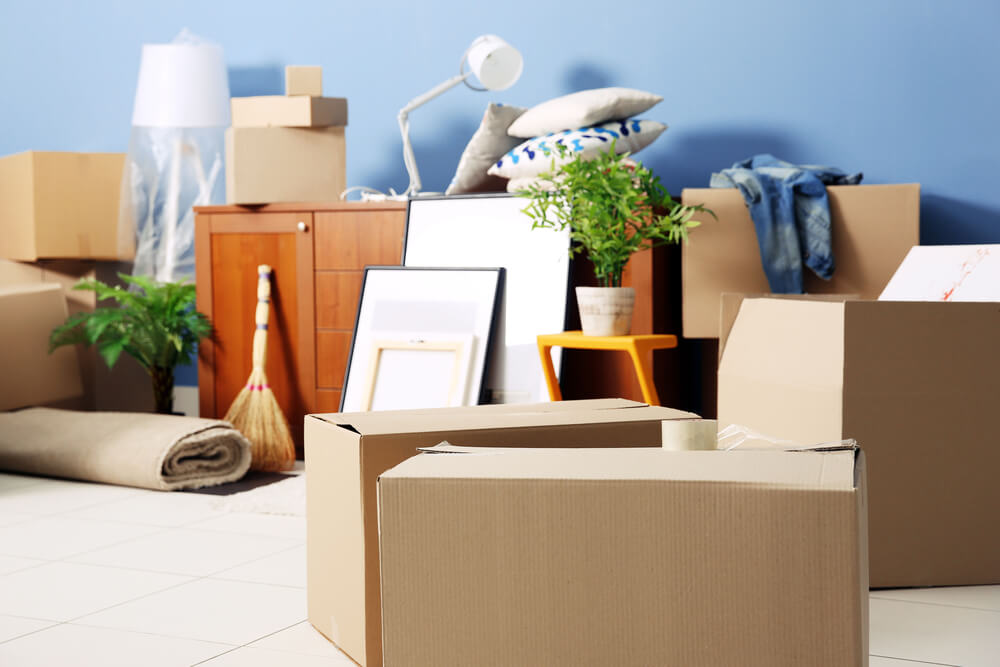It’s been said that failing to plan is the same as planning to fail. By planning how to organize your storage unit in advance, you ensure that items in storage are readily available should you need them. As well, a well-laid plan guarantees order and organization, often one of the key reasons why people rent a storage facility in the first place – to regain order and organization in an overcrowded or cluttered home.
Following these seven best practices for organizing your storage unit will help maintain that order. In other words, these tips make sure your belongings are exactly where you expect them to be when you need them.

- Label All of Your Boxes. This is rule number one on how to organize your storage unit. Using a permanent marker and white labels, mark box contents on all sides as boxes can often get turned around during visits.
- Store Heavy Items on the Bottom. Large/heavy furniture and heavy boxes (including safes) on the bottom. This is not only for practical reasons, but to ensure smaller items aren’t crushed or damaged.
- Prevent Mildew and Mold. Ensuring furniture is wrapped and mothballed reduces the possibility of mildew and mold, which not only damages the furniture itself but other items in your storage unit. As a bonus, wrapping and mothballing your items will keep it clean for when you remove it from storage.
- Create a Contents List. In addition to the #1 best practice, number each box and itemize its contents on a separate sheet, on a computer spreadsheet, or in a digital document for easy reference. This makes finding and accessing your items a lot simpler than rummaging through each box blindly. Although tedious, this step will save you plenty of time each time you visit your storage unit and don’t have a lot of time to spend searching.
- Plan Your Layout. Before you start filling your storage unit, plan to have a free and clear aisle down the middle of the unit, ideally with furniture stored on one side, and boxes stacked in an orderly fashion on the other. Since boxes are numbered (see Best Practice #4), storing them several layers deep should never be an issue when it comes to locating your items. On your main layout plan, roughly map out where each item is located for easy cross-referencing when you need to access your items.
- Consider a Larger Unit. If you have a lot of items to store, or items that do not stack easily, consider a larger unit. How to organize your storage unit long term? Well, larger units create greater space, making accessibility a lot simpler. As well, larger units make it a lot easier to integrate wooden pallets into your space, keeping furniture and boxes off of the floor, which can track dirt and moisture with each visit.
- Stack Boxes. As suggested in Best Practice #5, stacking boxes several rows high and deep ensure the best use of your space. In addition to numbering each box and mapping its location on your layout plan, store items from back to front with heavier boxes or items you’re less likely to need at the back.
Following these seven best practices for how to organize storage unit will guarantee an organized and stress-free storage experience, especially in times when you’re pressed for time or need to find an object quickly.

Thankyou for providing such informative ideas, keep sharing such amazing articles.
Thank you for your idea to create a contents list by numbering each box and itemizing all of its contents. My husband and I just got a storage unit and have been trying to figure out the best way to organize everything. We’ll be sure to keep this in mind and see if we can start getting on that since it seems like it could be a good way to make sure that we find things quickly.
This site certainly has all the information and facts I wanted concerning this subject and didn’t know who to ask.
It’s wonderful that you are getting thoughts from this piece of writing as well as from our discussion made at this place.|
We’re so glad you found our content helpful!